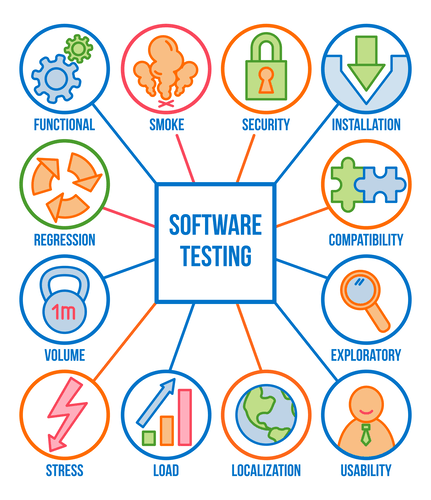The researcher uses test statistics to compare the association or relationship between two or more variables. Imaging a function f() that maps the p-value onto the probability that the alternative hypothesis is true. It would be reasonable to assert that this function is strictly decreasing , and that it gives values between 0 and 1 .
- Despite the many criticism over the years the core logic and capacities of an NHST remain key in making data speak in the presence of uncertainty.
- Just remember though that the alternate hypothesis is never certain, since the null hypothesis could have, by chance, generated the results.
- Under the alternative hypothesis, the mean of the population could be, among other values, 201, 202, or 210.
- These model predictions, though much lower than those for movements, are in fact reasonably good for stationary activities, which by nature are more difficult to predict owing to the stochastic crowd dynamics.
- In other words, the occurrence of a null hypothesis destroys the chances of the alternative coming to life, and vice-versa.
- The distribution of the test statistic under the null hypothesis partitions the possible values of T into those for which the null hypothesis is rejected—the so-called critical region—and those for which it is not.
- An empirical hypothesis is subject to several variables that can trigger changes and lead to specific outcomes.
Or to ensure we won’t reach mistaken interpretations of data too often in the long run of experience? Modern statistical methods grew out of attempts to systematize doing all of these. The reconciliations and unifications have been revealed to have serious problems, and there’s little agreement on which to use or how to interpret them. As for eclecticism, it’s often not clear what is even meant by “works.” The presumption that all we need is an agreement on numbers–never mind if they’re measuring different things–leads to pandemonium. Let’s brush the dust off the pivotal debates, walk into the museums where we can see and hear such founders as Fisher, Neyman, Pearson, Savage and many others. This is to simultaneously zero in on the arguments between metaresearchers–those doing research on research–charged with statistical reforms.
Left Tailed Hypothesis Testing
Statistical hypothesis tests define a procedure that controls the probability of incorrectly deciding that a default position is incorrect. The procedure is based on how likely it would be for a set of observations to occur if the null hypothesis were true. This probability of making an incorrect decision is not the probability that the null hypothesis is true, nor whether any specific alternative hypothesis is true.

It seems that students easily learn how to perform the calculations required by a given test but get hung up on interpreting the results. Many computerized tools report test results in terms of «p values» or «t values». You do this to test the null hypothesis that the two samples are drawn from the same underlying population.
What is Hypothesis Testing?
Even though this might be a confusing bit for many, it is still crucial (and one can argue endlessly about the degree of subjectivity that hides behind this «more extreme» wording). The null hypothesis is false and Muriel has discriminatory powers. I wish teachers and textbooks didn’t use the phrase «or more extreme», really. Two variants I have heard might be paraphrased as «more favourable towards $H_1$» or «more persuasive of $H_1$».
Recalibrating the Pre-Sidedress Soil Nitrate Test for No-Till – No-Till Farmer
Recalibrating the Pre-Sidedress Soil Nitrate Test for No-Till.
Posted: Fri, 19 May 2023 13:46:19 GMT [source]
Learned opinions deem the formulations variously competitive , incompatible or complementary. The dispute has become more complex since Bayesian inference has achieved respectability. The probability of a false positive is the probability of randomly guessing correctly all 25 times.
Step 3: Conduct a Statistical Test
The latter allows the consideration of economic issues as well as probabilities. A likelihood ratio remains a good criterion for selecting among hypotheses. Those making critical decisions based on the results of a hypothesis test are prudent to look at the details rather than the conclusion alone. In the physical sciences most results are fully accepted only when independently confirmed. The general advice concerning statistics is, «Figures never lie, but liars figure» . Reject the null hypothesis, in favor of the alternative hypothesis, if and only if the p-value is less than the significance level threshold (α), for example 0.05 or 0.01.

Suppose a teacher evaluates the examination paper to decide whether a student passes or fails. A company is claiming that their average sales for this quarter are 1000 units. To put this company’s claim to the test, create a null and alternate hypothesis.
Types of data: Continuous, categorical, or binary
The statement also relies on the inference that the sampling was random. A statistical test procedure is comparable to a criminal trial; a defendant is https://globalcloudteam.com/ considered not guilty as long as his or her guilt is not proven. Only when there is enough evidence for the prosecution is the defendant convicted.

Data from a sample is used to estimate a population parameter using confidence intervals. Data from a sample is used in hypothesis testing to examine a given hypothesis. We must have a postulated parameter to conduct hypothesis testing. Advocates of a Bayesian approach sometimes claim that the goal of a researcher is most often to objectively assess the probability that a hypothesis is true based on the data they have collected.
How the size is derived
Mathematical models support the conjecture that most published medical research test results are flawed. Null-hypothesis testing has not achieved the goal of a low error probability in medical journals. The critical region was the single case of 8 successes in 8 trials based on a conventional probability criterion (Fisher asserted that no alternative hypothesis was required. statistical testing The null hypothesis is that no radioactive material is in the suitcase and that all measured counts are due to ambient radioactivity typical of the surrounding air and harmless objects in a suitcase. We can then calculate how likely it is that the null hypothesis produces 10 counts per minute. In this fashion, null hypotheses can be formulated and subsequently rejected.

The explicit calculation of a probability is useful for reporting. The calculations are now trivially performed with appropriate software. This is the probability, under the null hypothesis, of sampling a test statistic at least as extreme as that which was observed . The dispute between Fisher and Neyman–Pearson was waged on philosophical grounds, characterized by a philosopher as a dispute over the proper role of models in statistical inference.
Multivariate regional frequency analysis
We use test statistics together with critical values, p-values, and significance levels to determine whether to reject or not a null hypothesis. When running a hypothesis test, the test statistic’s graph is often used to define the probability (P-value) range, usually found as a normal distribution or t-distribution. This allows the researcher to calculate the probability value for each outcome, i.e. that the results were caused by random chance or can be attributed to the hypothesis being true.
